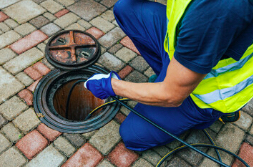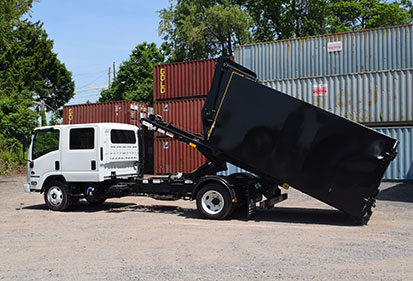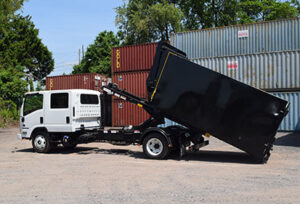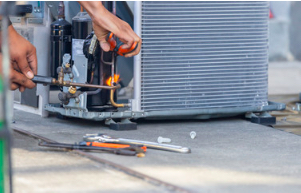A roof is a critical part of any structure. Without it, your home or business would quickly deteriorate from the elements. Damaged roofs can cause leaks, mold growth, animal infestation, and lower resale value.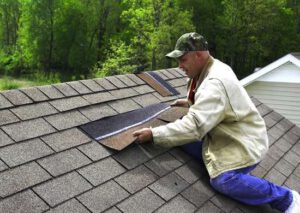
Regular inspections are crucial to spotting roofing problems before they become significant problems. Contact Roof Repair NJ for professional help.
A sound shingle roof needs a good layer of granules to offer UV, impact, and corrosion protection. But a number of common problems can rob your top of this vital layer.
Unsealed shingles are vulnerable to moisture and can allow water to seep into your home. Isolated cracks in shingles may be repaired with relative ease, but widespread shingle damage can signal the need for a full roof replacement.
Blistering is a more serious problem that causes dark stains on your roof. This symptom often points to inadequate ventilation in your attic or a deteriorating underlayment that’s allowing the heat of your home to melt the asphalt shingles.
Damaged shingles can also curl, creating an ugly, uneven appearance. Curling is often caused by a combination of factors, including high winds, improper installation, or poor ventilation. If left uncorrected, these problems can lead to leaks and other problems in your attic and throughout the house.
When shingles develop a concave center, or cup, the shingle becomes unstable and can eventually leak into your home. Cupped shingles also leave standing water that can cause mold and mildew, and the moisture can penetrate into your attic.
A common repair involves installing a new shingle over the old one. To do this, slide a flat pry bar under the damaged shingle and pry it loose. Carefully peel back the shingle layer above it, and use a catspaw pry bar to break the seal with the shingle underneath (this will require you to go two shingles up-roof). Pull out the damaged shingle and replace it with a new one. Use a caulking gun to inject roofing tar beneath the shingle for extra support.
If you’re replacing a badly torn shingle, it’s important to match the color of the replacement with your existing shingles. This can be tricky, but it’s often possible to camouflage the repair by examining the gutter for colored granules that have washed down from your roof. If you find a matching granule, you can sprinkle it over the new shingle to hide the repair.
Damaged Flashing
Flashing is a thin material that prevents water from seeping around chimneys, vents, skylights and other roof penetrations. It is commonly made from metals such as galvanized steel, copper or aluminum and helps to keep moisture away from these areas of the roof. Flashing is designed to be tough, but it can show signs of damage over time due to exposure to harsh weather conditions such as hail, acid rain and severe winds. In coastal neighborhoods, exposure to salt air can also degrade roof flashings.
Flashing problems range from small cracks and holes to rusted through or bent sections. It is important to watch for any discoloration on the wall or ceiling near where roof flashing is installed and also leaks during rainfall. Small holes may be easily repaired with roofing cement or roof caulk, but if left untreated, these tiny holes will turn into larger ones that allow rainwater to seep into the home.
In addition, a leaking roof can lead to corrosion of the flashing, which is a problem that requires a professional repair service. Faulty flashing can cause water to corrode through the shingles and into the attic, causing mold and mildew. It is also possible for a leak to run down the interior walls and into rooms that are not directly under the leaking flashing.
Even though it is not always possible to spot a problem with the flashing from the ground, it is important to have an annual visual inspection by a professional roofer to check for any damage or areas where moisture may be getting in. The expert roofer will be able to recommend a thorough repair for any areas of concern.
If the roof flashing is completely compromised, it will need to be replaced. It is important to have a professional replace the flashing immediately to ensure that moisture does not get into the attic and other parts of the home. The roofer will remove the affected shingles, expose the flashing and then install a new section of flashing that is properly sealed to the roof deck.
Damaged Pipes
Pipes that burst are one of the most destructive problems a homeowner can face. Leaking pipes cause water damage to walls, floors, ceilings, and furniture, and can also lead to mold and mildew that require expensive repairs. The longer a leaking pipe is left unattended, the more severe the problem will be. This is why it’s important to take action as soon as you notice a leaky pipe in your home or business.
There are a few ways to fix a damaged pipe, depending on where it is located. If the pipe is in a wall or ceiling, it may be possible to access it without opening any walls or removing any finish materials. In this case, you can use a pipe repair clamp or silicone or rubber seal tape to stop the leak. This is a temporary repair and should only be used until a plumber can arrive to evaluate the situation and make a more permanent repair.
If the pipe is outside, you can turn off the water using a local shutoff switch or the main water supply valve. Once the water is off, you can remove any waterlogged items and clean up the area around the pipe. Then, apply epoxy putty to the damaged pipe and joint. Make sure the area is completely dry before applying epoxy, and follow the manufacturer’s instructions for application and curing times.
Once the epoxy is cured, you can reconnect the pipe. If the pipe is exposed, you can use a coupling to connect it to the replacement pipe. If the pipe is behind a wall or ceiling, you will need to use a drywall saw to cut out the affected section of drywall and gain access to the pipe. After you have removed the drywall, use plumber’s flux to prepare the surface of the new coupling and the end of the replacement pipe. Then, solder the joints together.
A more permanent solution is to replace the damaged section of pipe with a new piece of PVC pipe. Before you start, you will need to shut off the water supply and make sure the old pipe is fully disconnected from all fittings. Then, use a gas torch to heat the copper pipe and the replacement coupling until they melt together. Next, feed solder into the joint and continue until it is filled with a smooth, watertight seal. Once the joints are sealed, you can reconnect the water supply and turn the water back on.
Damaged Soffit
Soffits are a crucial part of any sloped roof, acting as the skin that covers a roof’s eaves. They do a variety of tasks, such as protecting the inner roofing structure from moisture damage, helping with attic ventilation through small perforations, and supporting rain gutters that help keep water away from the fascia boards.
If you see soffit signs of damage, such as rot or a dark coloration, it is important to repair the damaged area promptly. Otherwise, you could experience serious structural problems that would require more costly repairs in the future.
Depending on the severity of the soffit damage, you may need to replace entire sections. This isn’t a project for a beginner, especially in older homes where builders used solid wood soffits. If you’re repairing a soffit in such a case, it’s best to hire a professional carpenter.
The soffit is located below the edge of the roof overhang, and it’s usually connected to the fascia with screws or nails. The soffit is a good place to start your roof repair because it is the first area of your roof that will show obvious signs of wear and tear, such as rot or discoloration.
You’ll also want to check the fascia board underneath the soffit for signs of wear and tear. A rotting or warped fascia can lead to further problems down the road, including leaks and water infiltration. Look for rot, dark discoloration or even cracks and chips on the fascia board.
The soffit is also home to different types of animals and pests, such as squirrels, rats, birds and more. Look for gnaw marks, droppings and nesting materials to find out if the soffit is infested by any of these creatures. They can wreak havoc in the attic and throughout the house if not dealt with promptly.

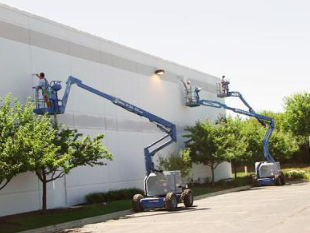
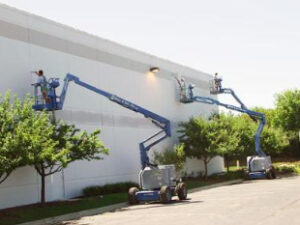 Whether you’re running an office, retail shop or some other business, keeping your place of business in tip-top shape is important for customer perception and company profitability. A fresh coat of paint can go a long way toward making your space look great and encouraging people to return. Having the right painting contractors on hand can make all the difference. Choosing a professional who understands the ins and outs of
Whether you’re running an office, retail shop or some other business, keeping your place of business in tip-top shape is important for customer perception and company profitability. A fresh coat of paint can go a long way toward making your space look great and encouraging people to return. Having the right painting contractors on hand can make all the difference. Choosing a professional who understands the ins and outs of 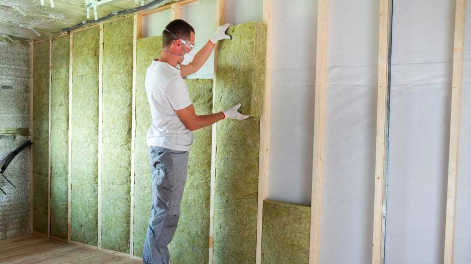
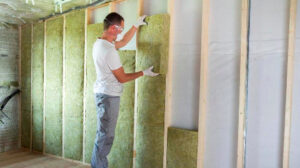 Insulation removal can be a complex and time-consuming process. It requires special equipment and knowledge to do it properly. This is why many homeowners choose to hire professional insulation removal services. This can save them a lot of time and energy. In addition, it ensures that the job is done correctly and safely.
Insulation removal can be a complex and time-consuming process. It requires special equipment and knowledge to do it properly. This is why many homeowners choose to hire professional insulation removal services. This can save them a lot of time and energy. In addition, it ensures that the job is done correctly and safely.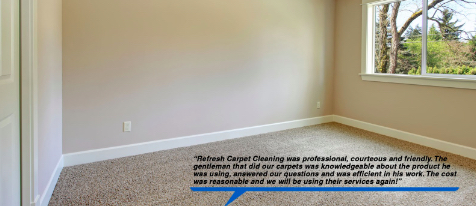
 Carpets act like giant air filters, trapping various pollutants that enter indoor spaces from the outside. Some of these include dirt, dust, pet dander and hair, bacteria, and mold spores. Over time, these pollutants can build up and negatively affect indoor air quality. If you have family members with respiratory illnesses or allergies, this can pose a serious health risk for them. Residential carpet cleaning can help eliminate these pollutants and keep your family healthy.
Carpets act like giant air filters, trapping various pollutants that enter indoor spaces from the outside. Some of these include dirt, dust, pet dander and hair, bacteria, and mold spores. Over time, these pollutants can build up and negatively affect indoor air quality. If you have family members with respiratory illnesses or allergies, this can pose a serious health risk for them. Residential carpet cleaning can help eliminate these pollutants and keep your family healthy.
